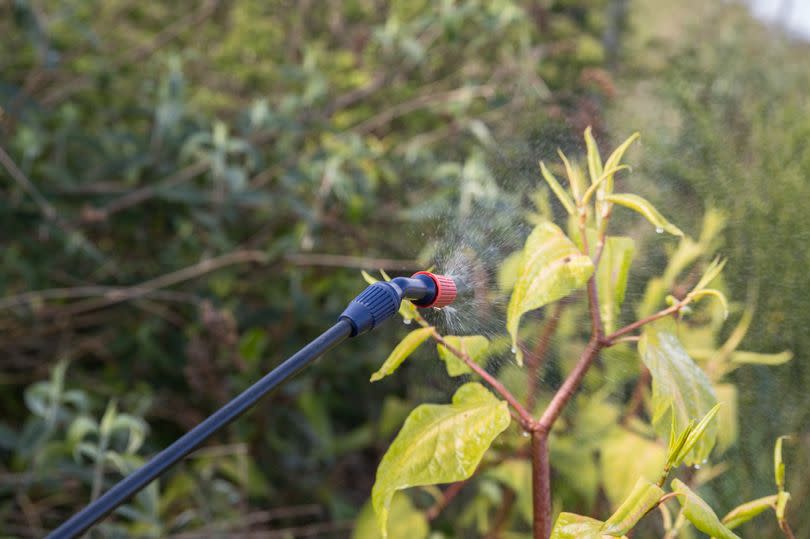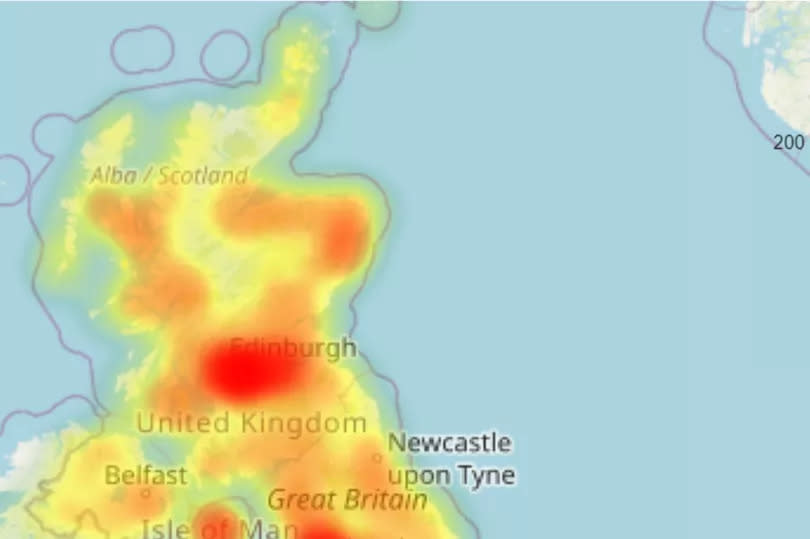Scotland's worst affected hotspots for Japanese knotweed named - check your area

It is almost summer and the time of year where Japanese knotweed cab infest our gardens, public areas and even our homes.
Thousands of homeowners will have to battle with the UK's most invasive plant as it grows throughout the spring and into summer. The weed will enter its growth phase soon and getting rid of it is no simple task.
This notorious plant can grow tall and spread at a rapid pace across gardens - stopping other plants from thriving and even damaging your property. The roots of the weed can grow as deep as three metres and can spread up to seven metres horizontally.
If left unchecked, Japanese knotweed can grow up through cracks in concrete, pathways, tarmac driveways, drains and cavity walls. The plant is native to Asia and was initially brought to the UK in 1850 as it was delivered to the Kew Gardens.
Now, the weed can be found across the UK due to its fast growing roots and invasive nature. While a lot of people attempt to tackle the knotweed on their own, it can be too much of a difficult job as it is extremely persistent.
It is important to know where the worst affected areas are so you can best protect your land from being invaded by the costly weeds.
Environet UK's online tracker, Exposed: The Japanese Knotweed Heatmap, can show you exactly where the plant can be found in its worst forms. Here we have broken down the worst infested areas by towns and cities to look at Scotland's worst affected areas.
Scotland's worst affected areas for Japanese knotweed

Aberdeen - 185
Glasgow - 142
Edinburgh - 76
Dundee - 4
Paisley - 57
Renfrew - 41
East Kilbride - 62
Lanark - 83
Livingston - 55
Dunfermline - 13
Hamilton - 129
Cumbernauld - 15
Kirkcaldy and Dysart - 6
Inverness - 7
Perth - 39
Kilmarnock - 6
Ayr - 3
Coatbridge - 49
Greenock - 11
Glenrothes - 4
Stirling - 15
Airdrie - 30
Falkirk - 23
Irvine - 13
Dumfries - 19
Motherwell - 85
Rutherglen - 167
Cambuslang - 118
Wishaw - 24
Bearsden - 128
Newton Mearns - 37
Clydebank - 79
Elgin - 10
Bishopbriggs - 86
Bathgate - 46
Arbroath - 1
Kirkintilloch - 77
Musselburgh - 18
Dumbarton - 49
Bellshill - 124
Peterhead - 20
St Andrews - 3
Bonnyrigg - 49
Barrhead - 14
Blantyre - 128
Penicuik - 33
Grangemouth - 10
Kilwinning - 5
Broxburn - 87
Johnstone - 4
Viewpark - 61
Larkhall - 26
Erskine - 18
Environet has also shared advise on how to spot Japanese knotweed and how you can get rid of it.
How to spot Japanese knotweed

Asparagus-like spears emerge from the ground in early spring and begin to sprout pale green leaves with distinctive pink veins.
In May, the plant begins to grow rapidly and the stems harden into bamboo-like structures. The leaves, which grow in a zigzag pattern up the stem, are green and heart-shaped.
By the middle of summer, the plant grows at around a rate of 10cm per day as the mature plant stands at a dense two or three metres tall.
The plant continues to bloom in August as small white flowers appear on the upper leaves.
How to get rid of Japanese knotweed
You can try getting rid of it yourself by cutting down the canes as close to the ground as possible then pouring a glyphosate-based weedkiller on it - making sure to only spray these weeds and not other plants.
Wait a week before you pull the weeds from the ground to allow the chemical solution time to target deep into the roots.
If you have a severe case of Japanese knotweed that is causing damage to your property, it is best to seek professional help. Gardening companies local to you should have all the tools and chemicals required to get rid of the invasive weeds.

 Yahoo News
Yahoo News 
